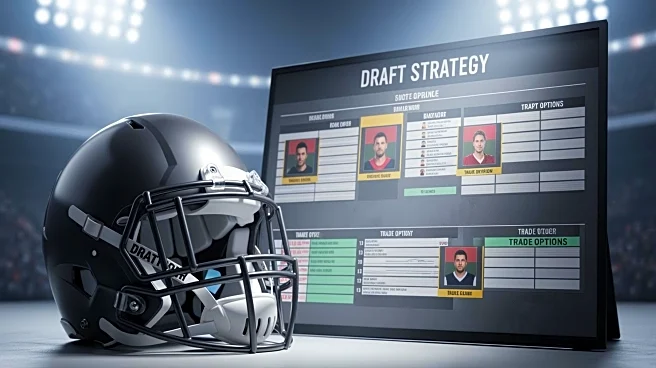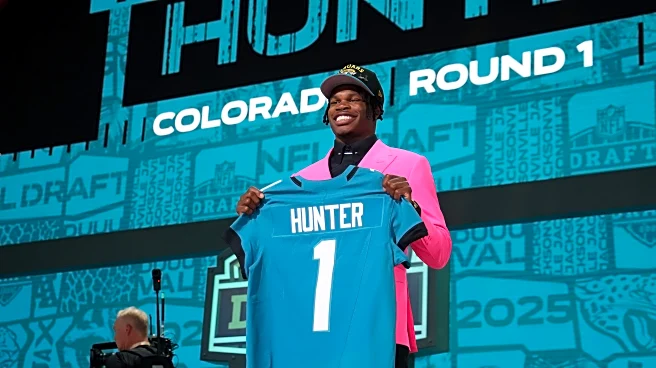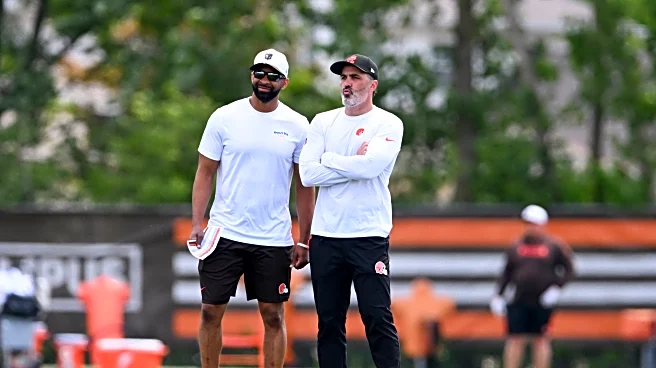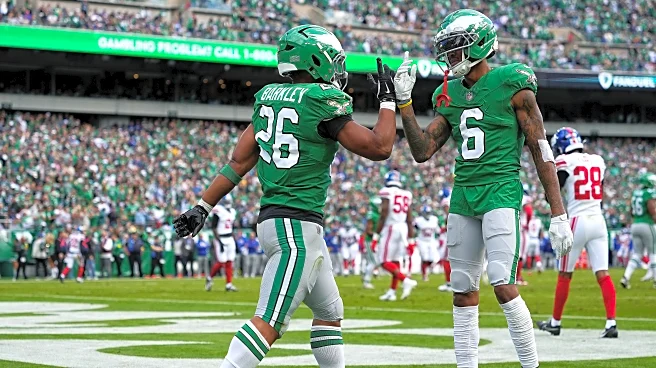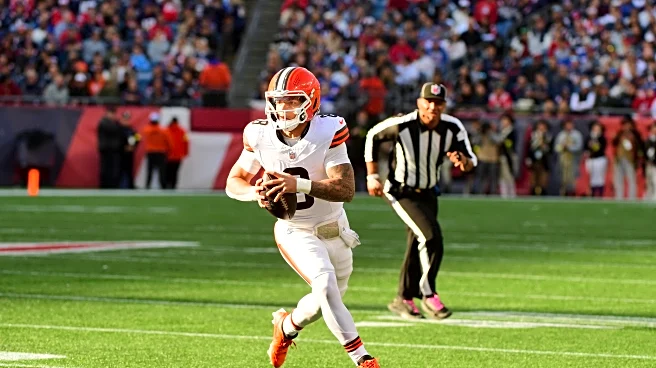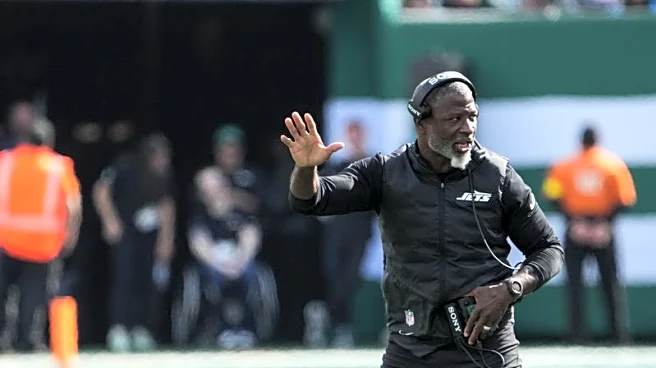What's Happening?
The Cleveland Browns made a strategic decision during the 2025 NFL draft by trading their second overall pick, which was speculated to be used for Travis Hunter, to the Jacksonville Jaguars. In return,
the Browns received a package of four picks. This decision has started to show its benefits as the players acquired through this trade, namely Mason Graham, Quinshon Judkins, and Dylan Sampson, have become integral to the team's strategy. Travis Hunter, who was eventually picked by another team, is currently on the injured reserve list due to a knee injury, sidelining him for at least four games. Despite Hunter's decent performance with 28 receptions for 298 yards and one touchdown, the Browns' choice to trade the pick appears to be a sound decision as the players they acquired are contributing significantly to the team's performance.
Why It's Important?
This decision by the Cleveland Browns highlights the importance of strategic planning in the NFL draft process. By opting to trade their high-value pick, the Browns have managed to secure multiple players who are already proving to be valuable assets. This move not only strengthens their current roster but also sets a foundation for future success. The decision underscores the potential long-term benefits of trading high draft picks for multiple assets, especially when the players acquired can immediately impact the team's performance. This strategy could influence other teams in the league to consider similar approaches, focusing on depth and versatility over singular high-profile picks.
What's Next?
The Browns still have one more pick to utilize from the trade in the first round of the 2026 draft, which could further enhance their roster. The performance of the players acquired through this trade will continue to be monitored, and their development will be crucial in determining the overall success of this strategic decision. As the team progresses, the Browns' management will likely continue to evaluate their draft strategies, potentially setting a precedent for future trades and draft decisions.
